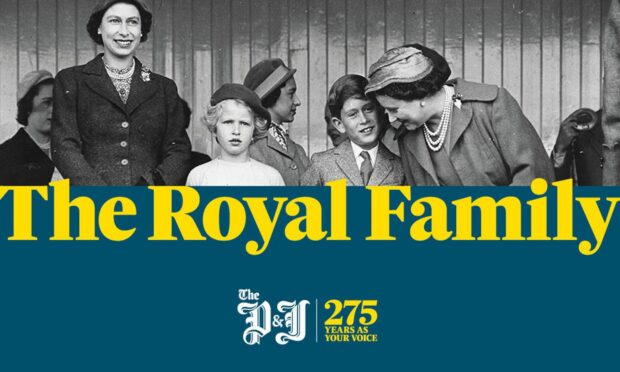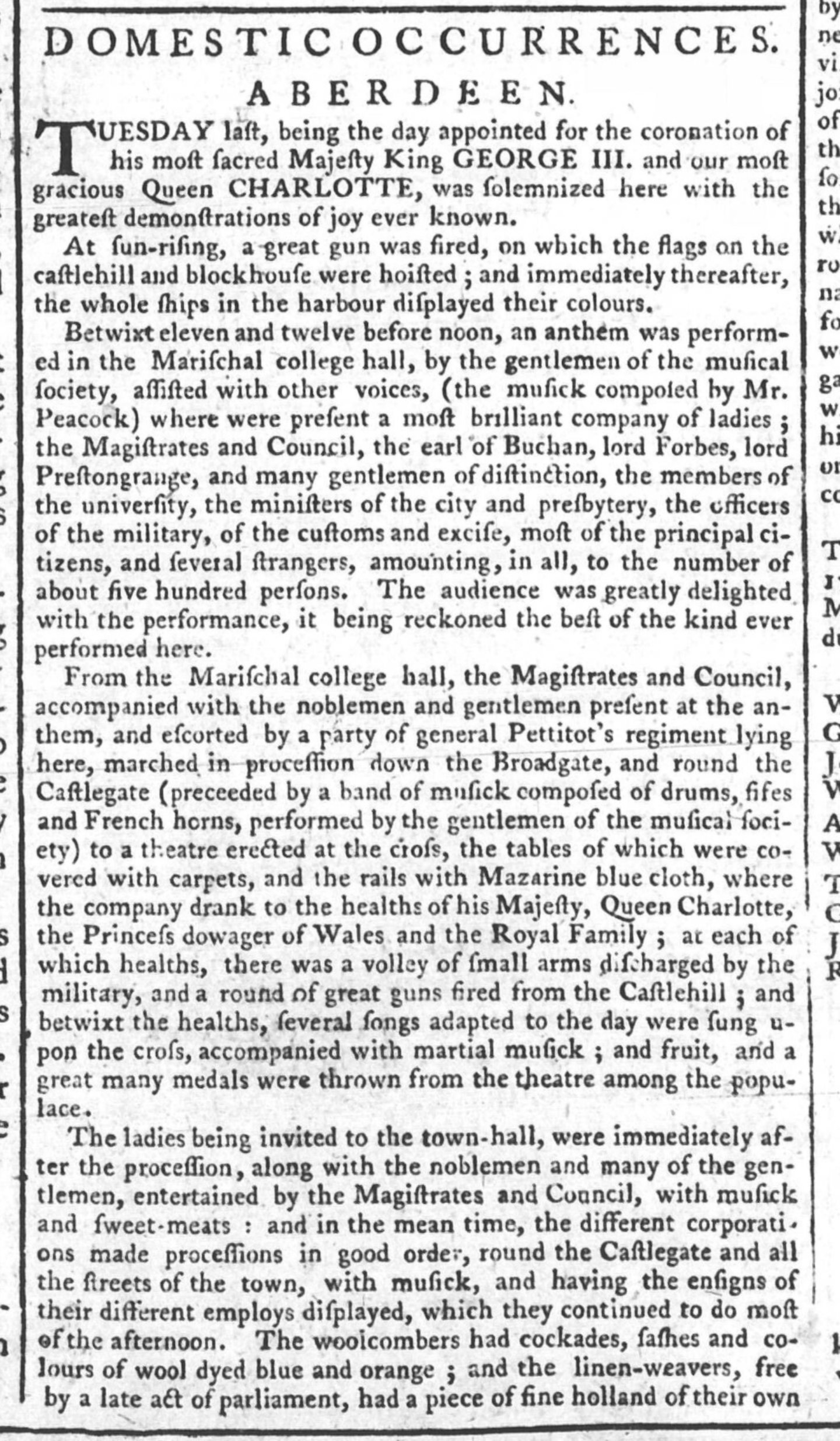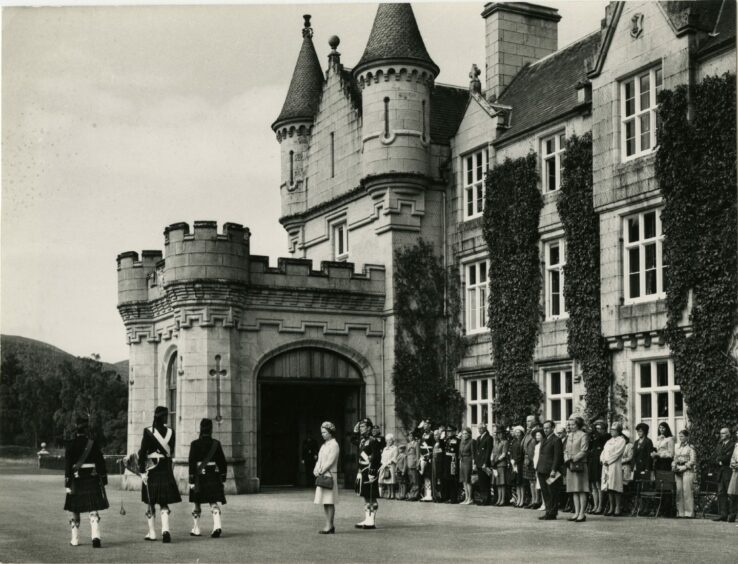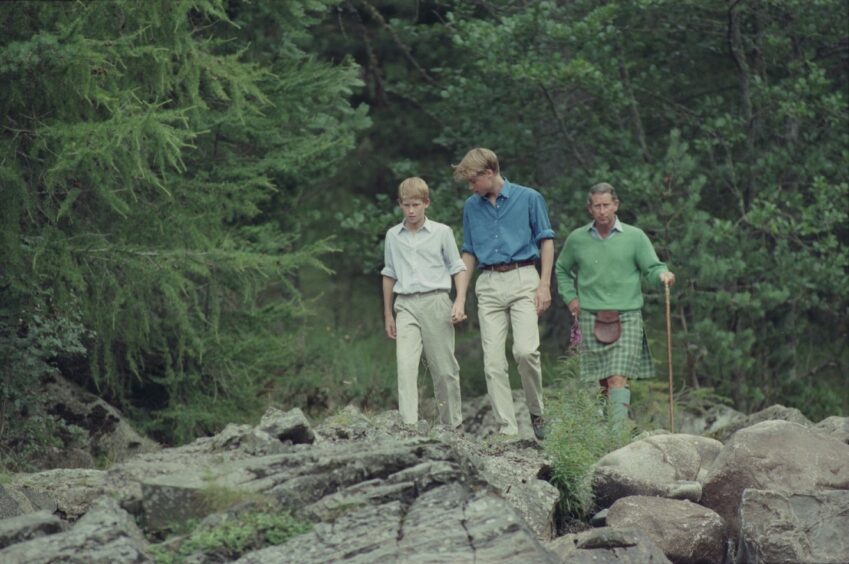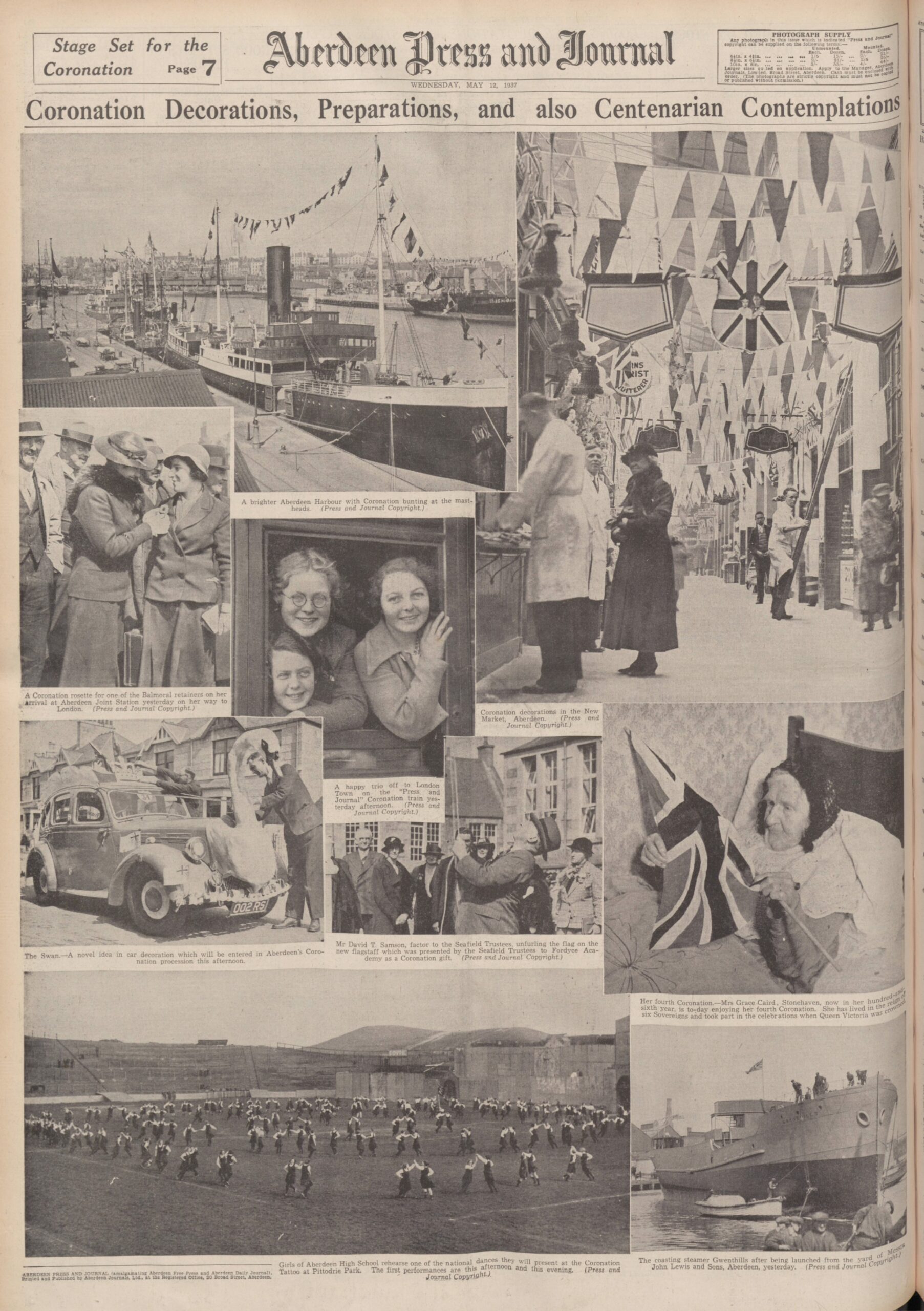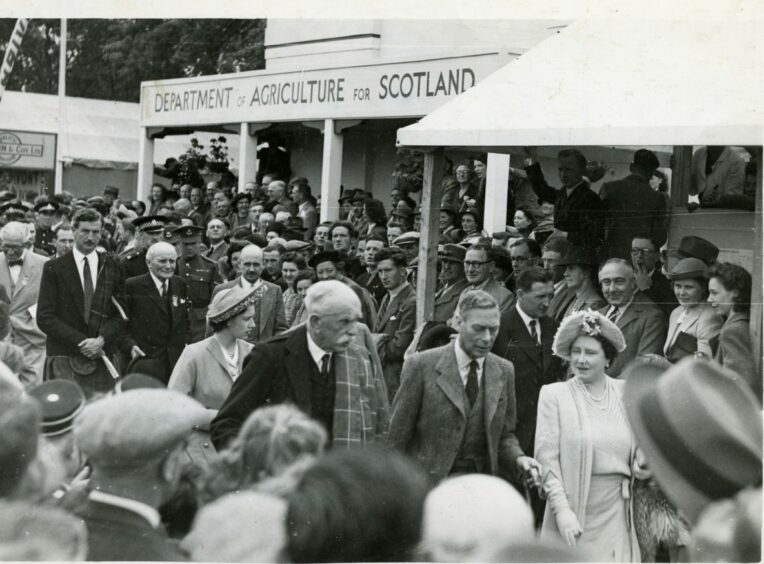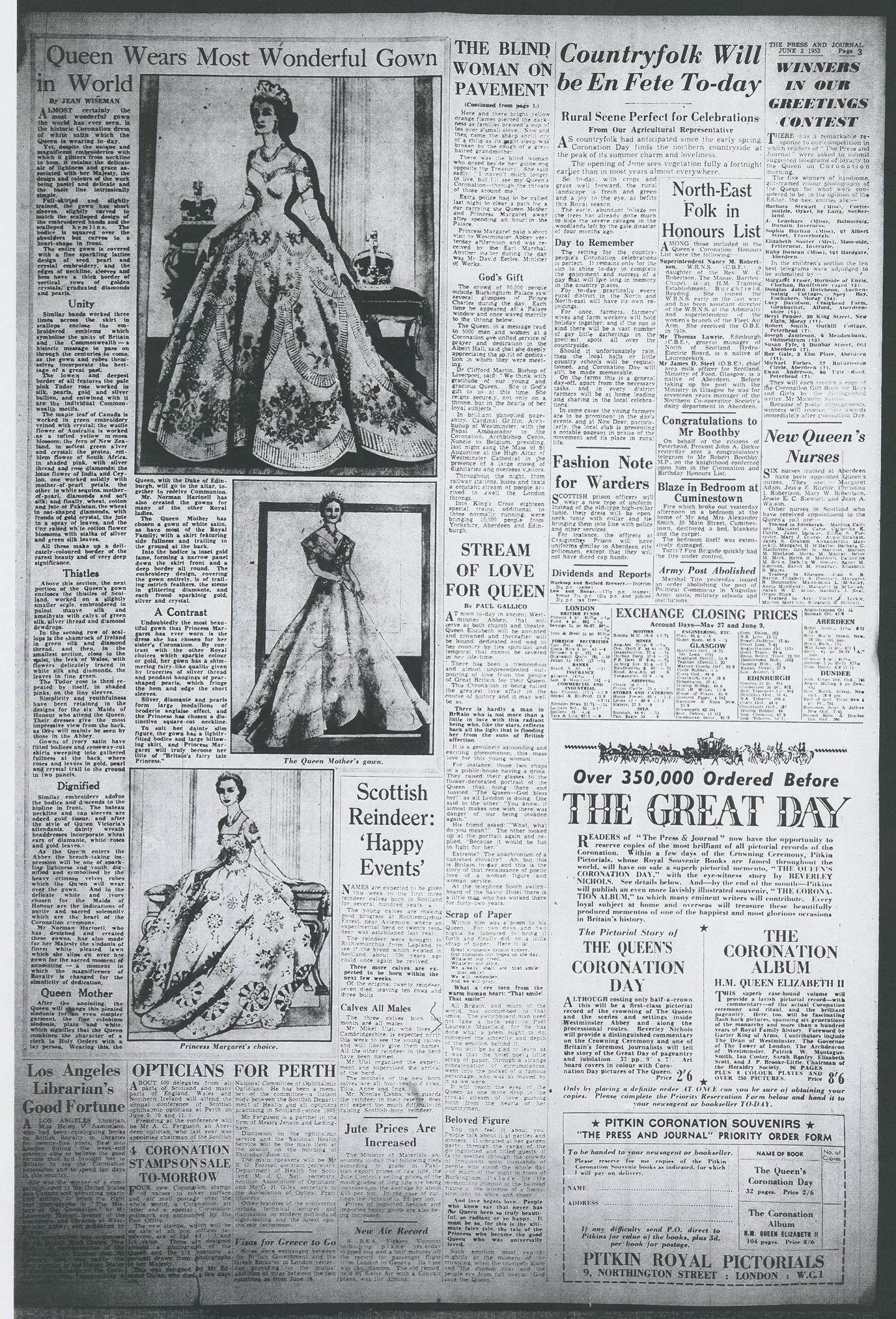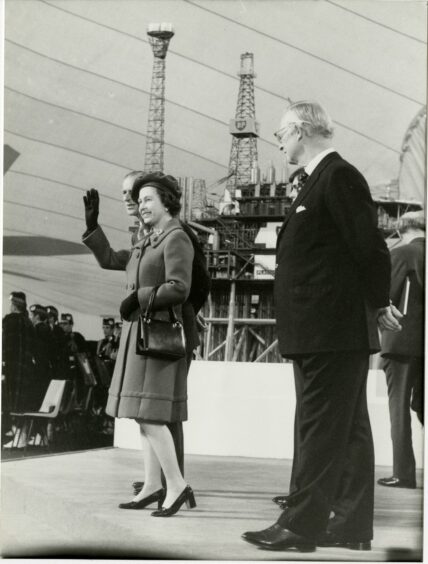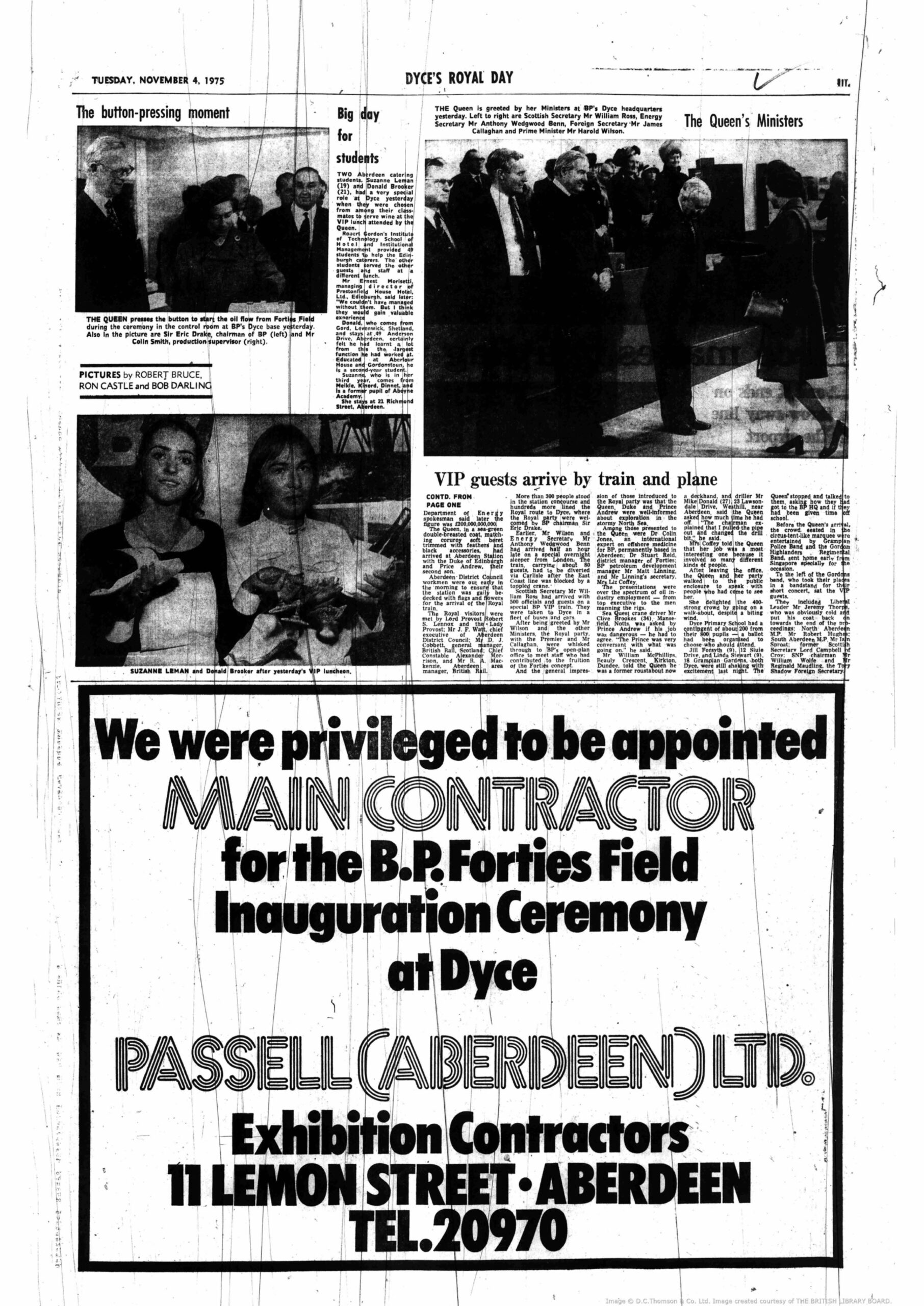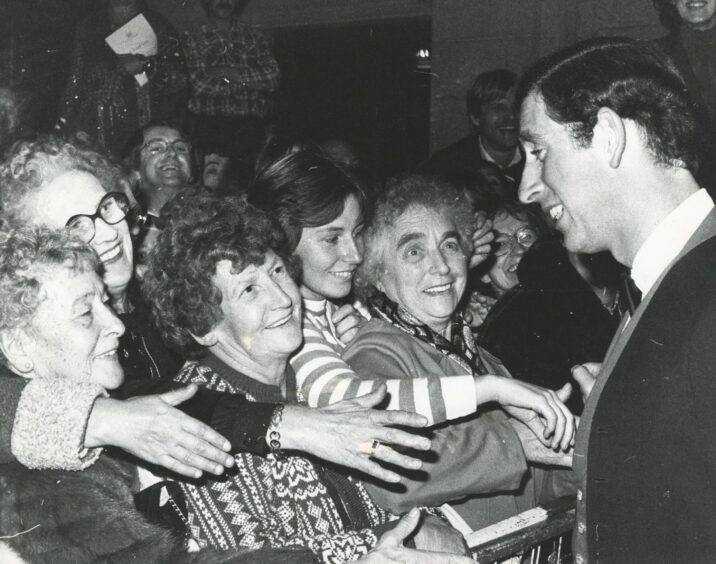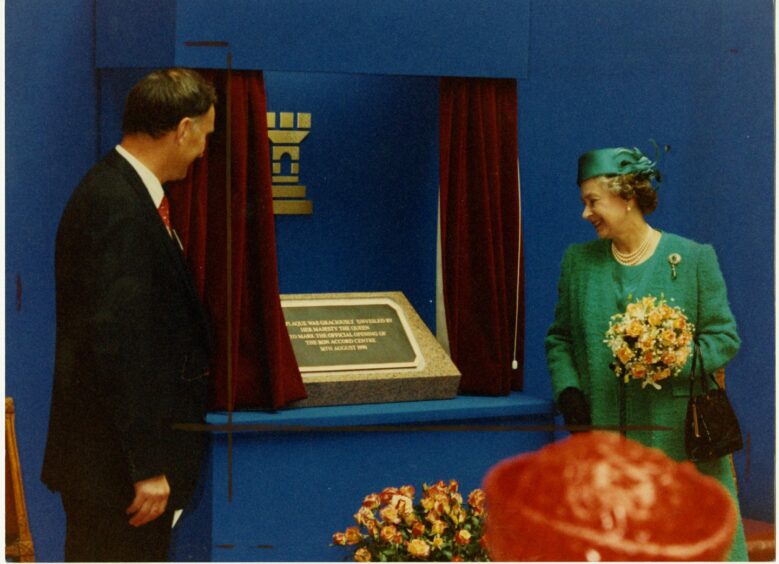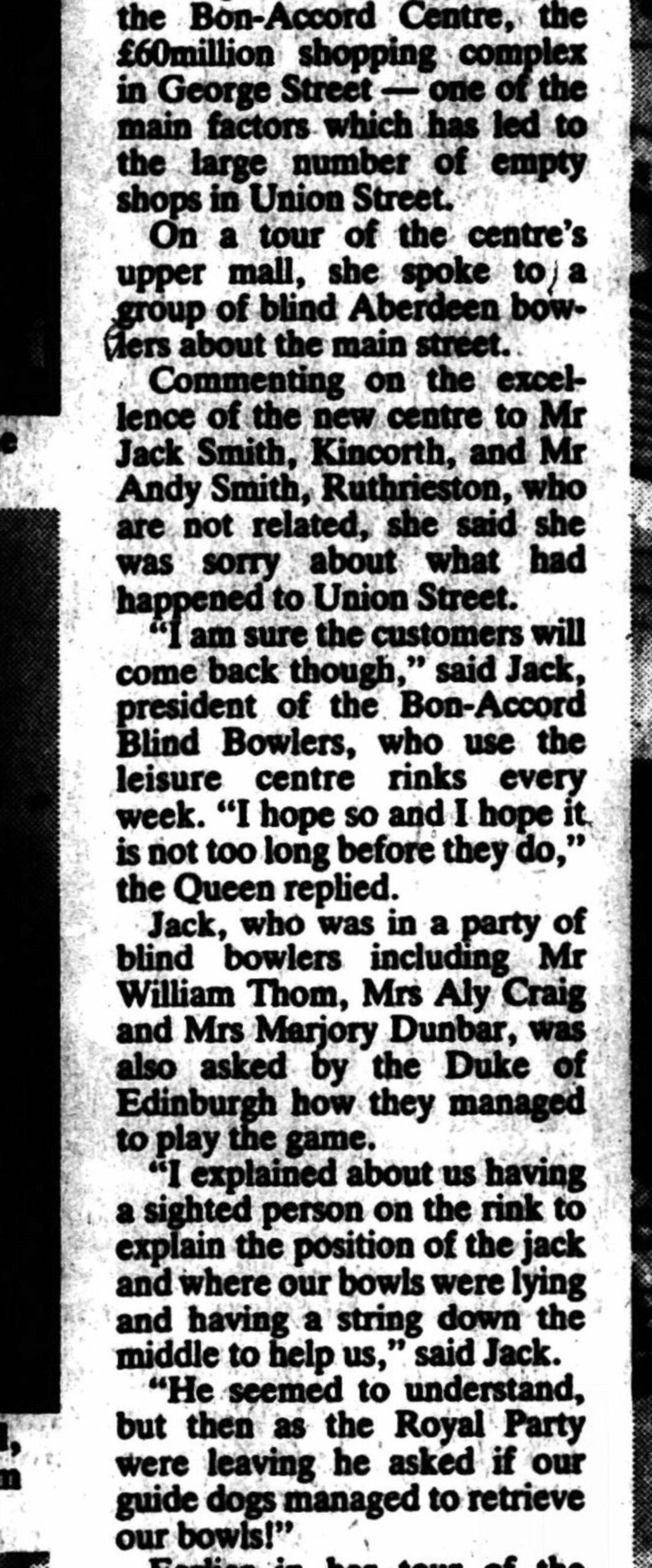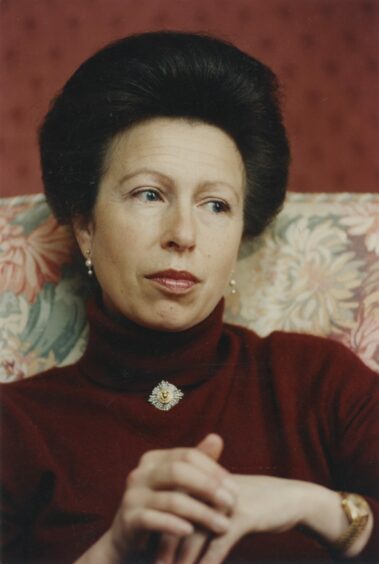The royal family has been an important part of The Press and Journal’s coverage for hundreds of years.
From the coronation of George III to the death of Queen Elizabeth II, The P&J has always provided readers with unrivalled reporting of local events connected to the monarchy.
Each month, as we celebrate our 275th anniversary, we have been bringing you a timeline of articles showcasing how The P&J has told local stories for more than two centuries.
This month, as we celebrate the coronation of King Charles III, we take a look at the years of reporting dedicated to the royal family and how its members have been revered by people across the north and north-east.
1761: The north-east celebrates the coronation of George III
George II (1683-1760) was King when The Aberdeen’s Journal – today’s P&J – began publishing in 1748.
The accession of George III to the throne in 1760 was the first coronation reported, taking place on September 22 1761.
The Aberdeen’s Journal did not report on the coronation ceremony itself but devoted two columns detailing how the people of the north-east were marking the event.
In Aberdeen, flags were flown, bells rung and all the ships in the harbour displayed their colours.
An anthem, composed by Francis Peacock, was performed in Marischal College hall to about 500 civic dignitaries and guests.
This was followed by the guests joining a military procession down Broadgate and around Castlegate to a “theatre erected at the cross” where toasts were made to King George III, Queen Charlotte and the royal family.
Other parades took place around the city with the various trades, such as “woolcombers” and linen-weavers, dressing brightly to mark the occasion.
Fireworks set off from the cross during the evening celebrations included “fire-wheels, balloons, skyrockets, serpents, swarmers and squibs”.
Thankfully, “Everything was conducted with the greatest harmony… and not the minutest accident happened to any person whatever”.
Meanwhile, in Stonehaven, the great and the good marched through the town, with wine, fruit and money distributed among the people.
In Banff, the ships in the harbour flew their colours, fired their guns after a procession, and rounded off the day with a ball and fireworks.
In all, there was much celebration, processions, drinking, toasting and joy across the area.
1852: Balmoral Castle is purchased by Prince Albert
The purchase of Balmoral in 1852 marked 10 years of Queen Victoria and Prince Albert’s love affair with Scotland.
Before the 19th Century, the royals rarely ventured over the border.
But the works of Sir Walter Scott, which Queen Victoria devoured as a child, led her to fall head over heels for the Highlands.
Queen Victoria and Prince Albert first ventured to Scotland on holiday in 1842 – and a decade later they established their own getaway in the glens when the prince bought Balmoral Castle.
Tenants held a party in the castle’s ballroom to celebrate.
Published on July 7 1852, “Rejoicings at Balmoral” is an article announcing Prince Albert’s purchase of the castle and celebrating the newly formed connection between the royal family and Deeside.
Placed on a page that contains text only, the article does not fail to provide animated imagery and descriptions of the spirit of the people in the area reacting to the news.
The article stated Prince Albert had become a proprietor of the estate of Balmoral and that this was a matter of much importance to Deeside.
The purchase of the castle was seen as “a guarantee of the permanence of the connection between royalty and the Deeside Highlands”.
The news was received “with the greatest delight in the district” and preparations were initiated for a great party to celebrate.
On the Friday, at 5.30pm, a party of about 140, “consisting of the tenantry and a number of guests – gentlemen connected with the neighbourhood, as well as from other parts of the country – sat down to a very sumptuous dinner”, the paper reported.
Toasts were made wishing the best for the royal family and fireworks were set off in front of the castle accompanied by bagpipe music and laughter from the assembled crowds.
The P&J said: “The birds in the wood had long taken up their part in the proceedings and given their unsought assistance to the musicians in the ballroom before the revellers began to think of departing. They broke up between four and five o’clock.”
1901: The death of Queen Victoria
Queen Victoria reigned for almost 64 years, from 1837-1901.
When she died, the news was reported in almost real-time. This was the first instance of a monarch’s demise being covered in such a timeous fashion.
Advances in technology were now allowing news from across the country to be wired and telegrammed to Aberdeen.
The latest on the Queen’s illness and eventual death filled column inches that week for the news-hungry public.
The Press Association shared their report on the Queen’s illness at Osborne House on the Isle of Wight, printed on January 21, the day before her death.
Six columns were dedicated to the story and covered many angles – reports from the Press Association; an interview with her physician; reports on the summoning of the royal family and their current whereabouts; and even a series of short articles on how the news was being reported in papers abroad.
Notably, a “stop press-style box” was left at the end of the article so that more news could be added once the article had gone to press – presumably in case of a death announcement.
The following day, the box was used to report that the Queen had recognised and spoken to the German Kaiser.
The Queen’s death was reported on Wednesday January 23 1901 across three columns. An advert announced that a special supplement would be published on the Friday and that it would feature a portrait of the late monarch.
The paper of the 24th covered King Edward VII’s arrival in London and his proclamation as King.
The newspaper of January 30 1901 carried an illustration of Queen Victoria at various points in her life, and the exterior and interior of the Royal Mausoleum where she would be laid to rest at Frogmore, Windsor.
1927-2006: A selection of images of the royal family in Deeside throughout the years.
The P&J often had exclusive access to the royals in Deeside – much of this photography has rarely been seen.
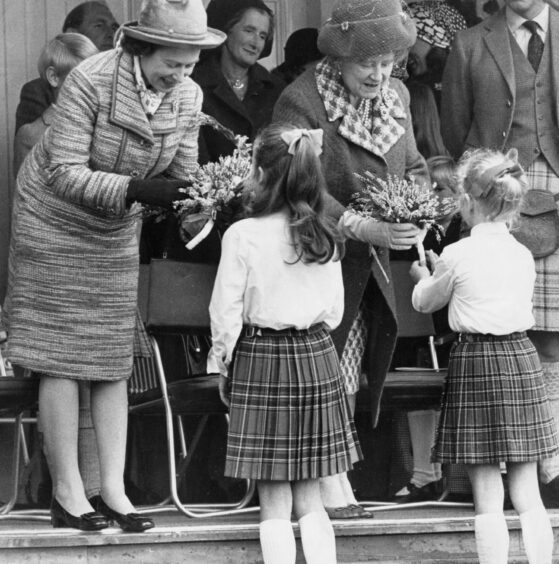
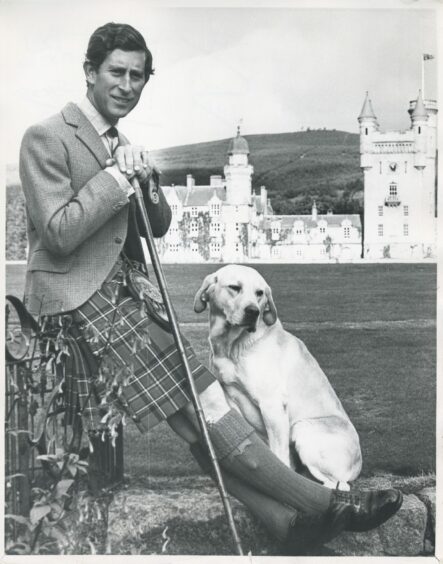
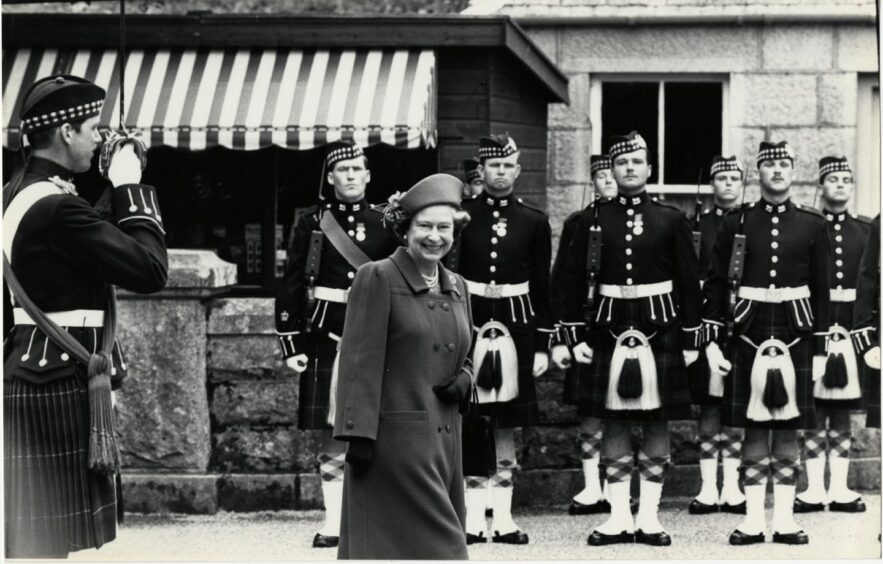
1937: Coronation of George VI
Technological printing advances ensured that the coronation of George VI in 1937 not only meant columns of printed text but also plenty of images.
Newspapers are always a day behind on what’s happened, reporting the previous day’s news. So, on the day of the coronation, we had a full page of local people preparing for the coronation. Bunting-lined streets, rehearsals, vehicle decorations and even an image of Grace Caird of Stonehaven who was preparing for her fourth coronation.
The paper the day after the coronation, on May 13, covered many column inches.
As well as detailed reports explaining the ceremony and pageantry taking place in London, The Press and Journal reported on the local festivities and angles, including sports meetings, picnics and pageants along with another full page of images of celebrations across the north-east.
A full page was devoted to reporting on regional events across the north and north-east and local connections were trumpeted.
The Press and Journal will always celebrate local angles on national news stories. Under the headline “Queen’s Maid from Dingwall”, the role of Catherine Maclean, a maid to the Queen, had the important job of laying out the coronation robes.
Catherine had worked at Glamis Castle, the childhood home of the Queen, and moved with her to London when she became Duchess of York on her marriage.
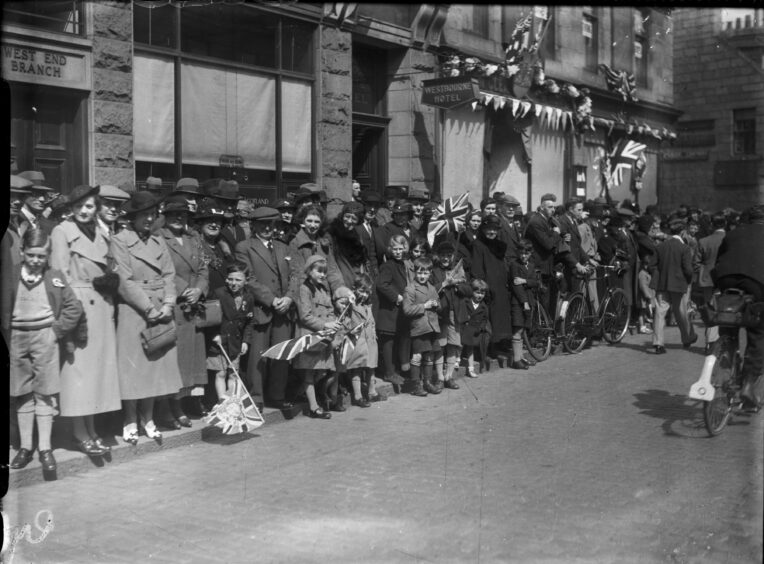
1948: A Royal Visit to Inverness by King, Queen and Princess Margaret
A visit by King George VI, Queen Elizabeth and Princess Margaret to Inverness in June 1948 was a big event for the city.
The Press and Journal was there reporting on their activities. However, as glamorous as the royals were, it was the stories of local people which came through in our coverage.
The headline story focused on a trip to the Royal Northern Hospital where the royals met a newborn baby, Campbell Mackay, whose lost rattle was returned to him by the Queen and Princess Margaret.
Outside the hospital, the King presented James McCabe of Glenlivet with the George Medal for Gallantry for rescuing a pilot from a burning plane – and suffering a spinal injury in the process.
The royal family’s limelight was again stolen when three-year-old Valda Cameron tried to present the Queen with a bouquet meant for Princess Margaret and had to be redirected.
Valda then demanded to meet the King – a wish that was granted “to the obvious delight of their majesties”.
The big news of the visit was the conferment of the “Royal” title to the Highland Show – henceforth to be known as the Royal Highland Show.
1953: The coronation of Elizabeth II
The coronation of Elizabeth II was covered in great detail across dozens of pages in The P&J.
At the time, we took a look at how we had reported on previous coronations.
On Page 3, we showcased extracts of reports that “displayed how little our love of pageantry and our devotion to the sovereign has changed down the centuries”.
The Press and Journal’s front page on June 3 1953 featured a first-person description of the Queen at the coronation from someone who was there, while intricate details of the monarch’s dress were analysed over two pages on June 2.
Reporters also told the story of how six nurses who trained at Aberdeen had been appointed Queen’s nurses.
A coronation message was also sent from the summit of Ben Nevis – with the Fort William provost climbing to the peak to send loyal greetings.
1975: The Queen opens Forties Oil Field
In an acknowledgement of the importance of the North Sea’s Forties oil field, the Queen and Duke of Edinburgh visited Aberdeen for its official opening in November 1975.
During a walkabout, the Queen met about 200 pupils from Dyce Primary School. Two of the pupils were “shaking with excitement” that afternoon when interviewed by the paper, explaining what they had discussed with the Queen.
1982: Prince Charles attends the reopening of His Majesty’s Theatre
A royal gala was held on September 17 1982 in the presence of the then Prince of Wales, now King Charles III, to mark the refurbishment of His Majesty’s Theatre in Aberdeen where he was greeted with “cheers and applause”.
The event wasn’t without some controversy. An ongoing dispute in the health service saw a labour councillor hand his tickets to a nurse and a member of domestic staff who attended in uniform handing out flyers.
Their message stated that the £50 gala ticket was the equivalent of a week’s wage for them.
Other attendees received free tickets from the lord provost and distributed by Voluntary Action Aberdeen.
In thanking the audience and praising the artists, the future monarch singled out a sketch by Scotland The What? stars about a toy shop in Ballater where the proprietor spoke in broad Doric.
The Prince of Wales reminisced about his grandmother taking him to that shop “and the man who looked after it spoke just like that”.
1990: Queen Elizabeth II opens the Bon Accord Centre for Christmas shoppers
When the Queen visited Aberdeen on her way to Balmoral on August 16 1990 – and with the Royal Yacht Britannia docked at the city’s harbour – one of her key tasks was to open the new Bon Accord shopping centre.
The £60 million centre had been blamed for a large number of empty shops on Union Street – which remains a hot topic of discussion to this day.
The P&J covered the opening and reported that the Queen had commented on this to the well-wishers she met, including a delegation from the Bon Accord Blind bowlers.
“I am sure the customers will come back though,” said their president, Jack Smith, to the Queen.
The P&J stated Mr Smith went on to explain to the Duke of Edinburgh how blind bowlers are assisted by sighted bowlers on the rink. Ever the joker, the duke asked if the “guide dogs manage to retrieve the bowls”.
1994: Princess Royal gives an exclusive and rare face-to-face interview to The Press and Journal
Always providing readers with exclusives, The Press and Journal’s coverage of royal matters was no exception.
In 1994, Moreen Simpson sat down with the Princess Royal who gave an exclusive and rare face-to-face interview to The P&J.
The interview was focused on Princess Royal Trust Carers Centres which were about to open across the UK.
Speaking to Moreen, Princess Anne talked about the lifeline these centres can provide to millions of ”hidden” men, women and young people who are caring for relatives at home.
1997: The death of Princess Diana
The death of Diana, Princess of Wales, in August 1997, saw an outpouring of grief across the UK.
On September 4 1997, The Press and Journal reported on two community-planned events to take place on the day of her funeral the following Saturday.
On the Isle of Skye, a Gaelic tribute “Soraidh Leis a’ Bhana Phrionnsa” was to be held at Sol Mor Ostaig, the Gaelic college in Sleat, with funds being raised for the Scottish-based Halo land mine charity supported by Princess Diana.
In Aberdeen, a service had been held at St Machar’s Cathedral attended by pupils from St Machar Academy and St Peter’s RC Primary School.
The P&J documented these events and the Rev Richard Frazer said: “It was our curiosity for pictures and intimate details which encouraged the media frenzy.”
He asked the assembled mourners to take away with them some of Diana’s compassion. Helen Graham of Hardgate said: “It was very moving. Absolutely everything said was just exactly what was in my own heart.”
Princess Diana was a regular visitor to Scotland – not only Balmoral and Deeside, but the north and north-east where she was greeted by crowds wherever she went.
2002: The death of the Queen Mother
Supplements to mark key royal occasions in the 20th Century became common, taking in jubilees, birthdays and, sadly, deaths.
These supplements offered a chance to celebrate the life of the individual and for The Press and Journal to find the local angle that meant something to its readers.
They marked milestone moments in history and are collectors’ items.
On the death of the Queen Mother in 2002, a special supplement “Our Memories” was issued on April 11.
The supplement focused on the Queen Mother’s interactions with people across The Press and Journal’s circulation area, with reminiscences from those who were there.
For example, on page 11, Charlie Simpson remembered the Queen Mother’s visit to the Mey Highland Games in October 2001.
A regular participant in the games, he recalled her request to meet with a German team who came second in the tug o’ war. “…the captain got so nervous he couldn’t breathe, but she soon had them chatting away. That was her. You had no need to worry about speaking to her because she brought out the best in everyone,” The P&J reported.
2022: Princess Diana’s links to the north-east of Scotland emerged after her death in 1997
Last year, Neil Drysdale’s ‘Past Times’ article revealed Diana’s links to the north-east of Scotland. The article also used some nice pictures of the princess and her visits to the region.
You can read the full piece here.
Princess Diana’s links to the north-east of Scotland emerged after her death in 1997
2022: The death of Queen Elizabeth II at Balmoral Castle
When Queen Elizabeth II died at Balmoral Castle, P&J reporters were among the first on the scene.
Over the coming days, the paper provided unrivalled coverage from the Scottish home she had come to love as much as her great-great-grandmother Queen Victoria.
It had been 170 years since Prince Albert bought Balmoral Castle in 1852.
The article in The P&J at the time mentioned the purchase of the castle by the royal family was “a guarantee of the permanence of the connection between royalty and the Deeside Highlands”.
This strong connection across time was maintained as the Queen died at her beloved Balmoral residence, enabling Scotland an intimate farewell.
Thousands of mourners across the country were able to say goodbye, watch the cortege and follow the Queen’s final journey which departed from the Deeside castle.
You can view some of our extensive coverage here.
Solitude among crowds: Balmoral’s rural charm adds to atmosphere on poignant day after Queen’s death
